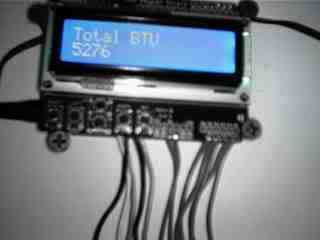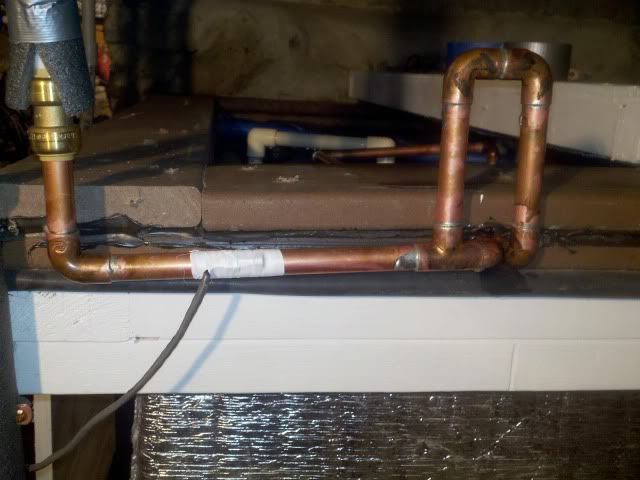Had a really good day today with some stuff.
It was cloudy most of the day, but late in the afternoon I got some good sun for a couple hours.
I uploaded the latest controller changes and the energy monitor is now up and running, and early impressions are really good! The energy monitor calculated within a couple hundred BTU what my manual calculation showed (manual calculation was just tank_delta_T * 240(gallons) * 8.33). A few weeks of testing should show it working in a range of weather conditions and I plan on comparing accuracies each day. Another plus for having an onboard energy monitor, is that you can take showers, etc without affecting your calculation.

I also have my collector return going into my tank about half way up the water level - thats right, its no longer returning into vapor space! At the end of my return pipe, I have a bit of a diffuser to slow the velocity of the incoming water to help me keep stratification in the tank. Currently, the "diffuser" is nothing more than a 1"x1/2"x1" T fitting. Going from 1/2" to 1" should slow things down, along with the fact that it now splits into 2 directions. Once I can get my hands on some 1" copper pipe scraps, I plan on adding a 1"x1 1/2" step-up (so its kind of like having a cone on each side of the diffuser T). Here is what I have currently though for now:

And finally, Gary's comment was right that if you are running a drainback system, you need it to work without fancy gadgets or added points of failure. I had an idea hit me last night, so I decided to try it out today....

Here, you can see that I put a T in the return line(which now goes into water space about half way up the tank), and went upwards off this T to create a vertical stand pipe, then back down into the vapor space of the tank. What should happen is that when the pump comes on and water comes down the return line, it will climb up this standpipe a bit until the initial surge needed to start pumping down into the tank is overcome, at which time the water level in the standpipe drops back down to the bottom. When the pump shuts off, air is pulled backwards through the standpipe from the vapor space of the tank, and drainback happens as it normally would. The best of both worlds!

here you can see in the tank where the return line goes down into the water, and just on the other side of it where it enters the sidewall, you can see the other end of the standpipe that goes into vapor space... (the other pipe you see entering the water around the center of the tank is just a dry well that a temperature probe sits in)
How did it work? NOT SO WELL! (initially)
When the pump ran, water would rise up and around the bend in the standpipe, and enter the tank in vaporspace. However, if I covered the end of the pipe just for a brief second, the return water would start pumping down into the tank as it should, even after my finger was removed... So it was obvious what to do at this point.... Build a taller standpipe to overcome the initial surge needed to get the water pumping into the center of the tank... I had about 18" to work with, so I was hoping it would be enough!

Here, you can see how I extended the standpipe, which was now about 18" tall. Upon pump start, the returning water would initially rise about 1/2 way up the standpipe (I could tell by feeling where it went from warm to cold), and almost instantly dropped back down to the bottom of the standpipe - it worked! Water now pumps into the tank at the level I want it to, and I didn't sacrifice drainback reliability!
I only had a few hours of sun today, so its too early to tell how much this will help keep stratification in my tank. But I will keep you posted!